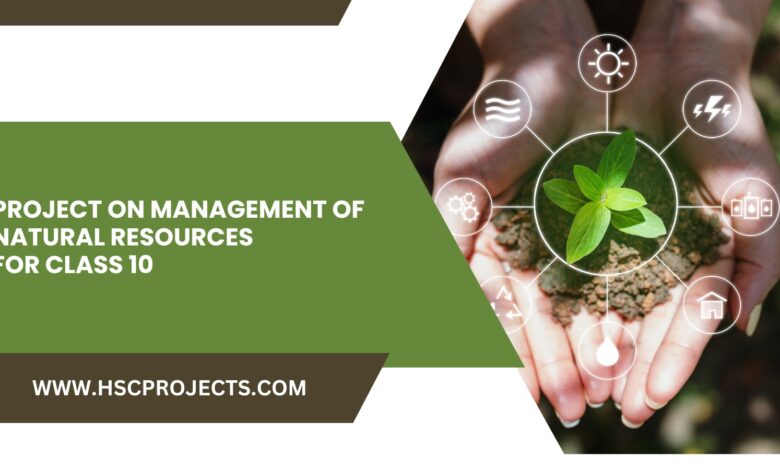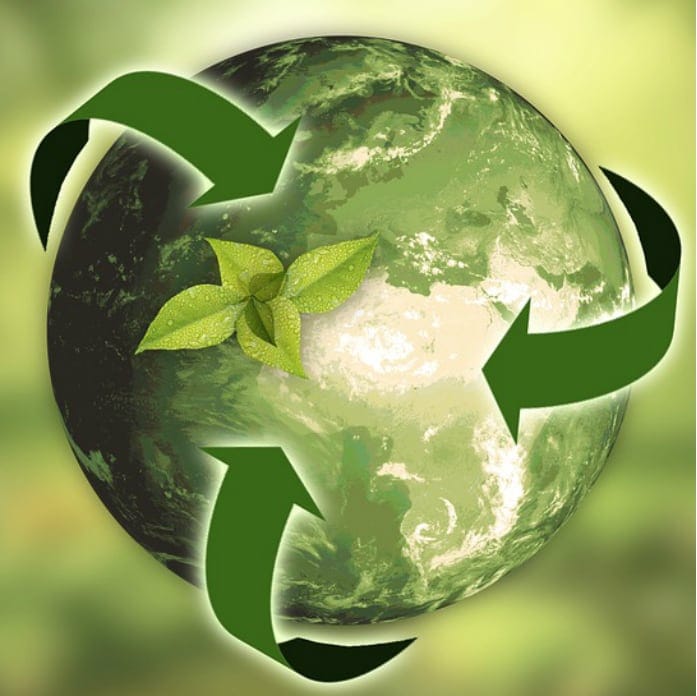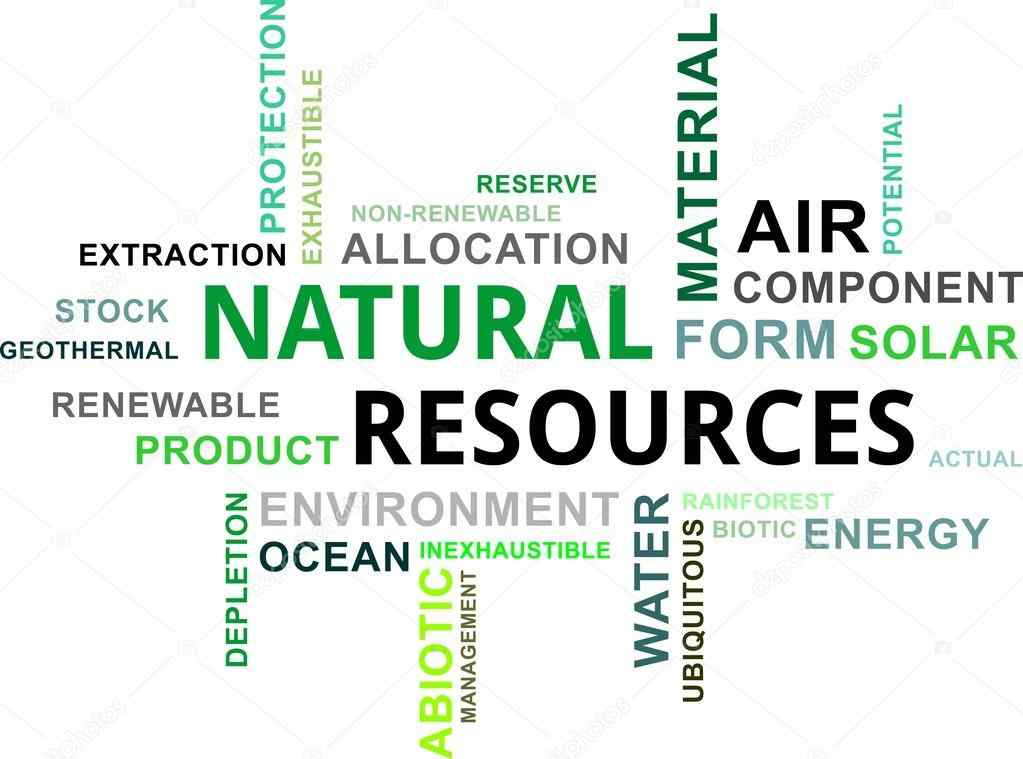
Project On Management Of Natural Resources For Class 10
INTRODUCTION:
Natural resources, such as the air we breathe, the water we drink, the land we live on, and the biodiversity that surrounds us, are the fundamental building elements of our world. The process of conserving and utilising natural resources in a way that is sustainable and advantageous to both current and future generations is referred to as management of natural resources. It is a crucial component of environmental management that contributes to maintaining the health and viability of our planet over the long term. We will go deeper into the idea of natural resource management and its different components in this project.

WHY ARE NATURAL RESOURCES NECESSARY?
For all living things to survive and develop, natural resources are necessary. Here are a few explanations for why we require natural resources:
Energy: To produce the energy that runs our homes, businesses, and industries, renewable energy sources like solar, wind, and hydroelectricity are combined with natural resources like coal, oil, and natural gas.
All life forms depend on water, which is utilised for drinking, irrigation, and other industrial processes.
Food: Agriculture, which provides the food that keeps us alive, depends on natural resources like rich soil, pure water, and sunlight.
Drugs: Plants and minerals are examples of natural resources that are used to make many of the medications that we use to treat ailments and diseases.
Materials for construction: Natural resources like wood, stone, and metal are used to construct buildings, roads, and other infrastructure.
In conclusion, natural resources are essential for meeting our basic requirements, such as those for food, water, shelter, and energy, and they also promote the advancement of economic and technical systems.
TYPES OF NATURAL RESOURCES

Based on where they came from, natural resources can be generally divided into three groups:
Resources that can be regenerated over time—either naturally or as a result of human activity—are referred to as renewable resources. Solar energy, wind energy, hydroelectricity, biomass, and geothermal energy are a few examples.
Resources that cannot be replaced after being used up are referred to as non-renewable resources. Examples include minerals like iron, copper, and gold as well as fossil fuels like coal, oil, and natural gas.
Resources that are unaffected by human use are known as inexhaustible resources. Examples include solar energy, wind energy, and tidal energy.
Natural resources can also be divided into smaller groups based on how they are used, such as energy resources, mineral resources, water resources, and forest resources.
WILDLIFE AND FOREST

Two essential natural resource components are forests and wildlife. Large tracts of land covered with trees and other plants are known as forests, and they have various ecological and economic advantages. By providing home for countless kinds of plants and animals, forests sustain biodiversity through regulating the climate, preserving soil fertility, preventing soil erosion, and all of the aforementioned.
Any living things that are not domesticated and are found in their natural environments are referred to be wildlife. Wildlife, which includes animals, birds, fish, and reptiles, is crucial for preserving the ecological equilibrium. Among other ecosystem functions, they aid in pollination, seed distribution, insect control, and nutrient cycling.
Yet, human activities like deforestation, overgrazing, poaching, and habitat destruction pose various dangers to forests and wildlife. To prevent future deterioration and extinction of forests and species, conservation activities are required. In addition to awareness campaigns, education initiatives, and sustainable forest management techniques, conservation measures include the establishment of national parks, wildlife reserves, and protected areas.
WATER FOR EVERYONE
For human health and survival, having access to clean water is crucial. Yet, access to clean water is a problem that affects billions of people worldwide, and it is made worse in poorer nations. To guarantee that everyone has access to clean and safe water, it is imperative to address the serious issues of water scarcity and water pollution.
When the demand for water outweighs the supply, water scarcity results. Many reasons, such as population growth, climate change, and ineffective water management policies, may be to blame for this. As water becomes contaminated with dangerous elements like chemicals, bacteria, and viruses, it becomes unfit to drink.
There are several actions that can be taken to alleviate these problems, such as:
encouraging the use of water-saving gadgets and techniques like drip irrigation and rainwater collection.
Purchasing water treatment equipment to raise the quality of the water.
constructing water infrastructure, such as pipelines, canals, and dams, to enhance the availability of water.
putting policies and rules into practise to stop water contamination and uphold standards for water quality.
educating localities on the value of water conservation and environmentally friendly water management techniques.
We can guarantee that everyone has access to clean, safe water—which is crucial for maintaining human health and wellbeing—by putting these steps into place.
DAMS

Large constructions known as dams are placed across rivers and streams to regulate water flow and store water for a variety of uses. Dams are crucial for irrigation, flood control, hydroelectric power generation, and water storage. Yet dam building and maintenance also have a big impact on the environment and society.
Dams have a number of benefits, including:
Water storage: Dams are capable of holding vast volumes of water that can be used for agriculture, drinking, and industrial uses.
Hydroelectric power generation: By using turbines that are powered by falling water, dams may produce energy.
Flood control: By managing the water flow in rivers and streams, dams can aid in the prevention of floods.
Recreation: Activities like boating, fishing, and swimming can be done in reservoirs created by dams.
Yet dam building and operation also have substantial effects on the environment and society, such as:
Displacement of people: Building dams may force local communities out of their homes, which could have serious social and economic repercussions.
Loss of natural habitat: The construction of reservoirs may cause the loss of plant and animal habitats.
Water quality: By modifying water flow, temperature, and nutrient levels, dams can have an impact on water quality.
Greenhouse gas emissions: Carbon dioxide and methane greenhouse gases can be released during the degradation of plants in reservoirs.
There are a number of steps that may be taken to lessen the negative effects of dams, including as carrying out environmental impact assessments, involving local populations in the decision-making process, and putting policies in place to lessen the effects of dam construction and operation.
PETROLEUM AND COAL
Petroleum and coal are two non-renewable energy sources that are frequently utilised in industry, transportation, and power generation. Unfortunately, using coal and petroleum also has a lot of negative effects on the environment and human health.
A fossil fuel largely used for the production of power is coal. Climate change is exacerbated by the large greenhouse gas emissions from coal mining and burning. Significant environmental effects of coal mining include habitat damage, water pollution, and soil erosion.
Petroleum, usually referred to as oil, is a fossil fuel that is largely used in industry and transportation. Petroleum is also extracted and burned, which results in a considerable amount of greenhouse gas emissions and climate change. Offshore drilling and transportation oil spills have the potential to seriously harm marine ecosystems.
Many steps can be taken to lessen the harmful effects of using coal and petroleum, including:
encouraging energy efficiency and conservation to lower energy consumption.
developing and supporting renewable energy sources, such as hydropower, wind power, and solar power.
putting policies and rules into effect that will lower greenhouse gas emissions and encourage the use of cleaner energy.
promoting the use of electric vehicles, carpooling, and public transportation to cut down on the usage of petroleum.
encouraging environmentally friendly mining methods and minimising mining’s negative effects.
By putting these steps in place, we can lessen our reliance on coal and oil and shift to a cleaner, more sustainable energy future.
THE FIVE ‘R’ PRINCIPLES OF WASTE MANAGEMENT
The act of gathering, moving, processing, and disposing of trash in a way that is both environmentally and socially responsible is known as waste management. A helpful foundation for decreasing waste and supporting sustainable waste management practises is the “Five R” principle of waste management. There are five R’s:
Reduce: The word “reduce” is the first R. This entails utilising less material or packaging to reduce the quantity of waste produced.
Reuse: Reuse is denoted by the second R. This entails reusing goods and resources several times before discarding them.
Recycle The word “recycle” is the third R. To develop new items, recycling resources like paper, glass, and plastic is necessary.
Recover The word “recover” is the fourth R. This refers to extracting energy from waste through other processes, such as incineration.
Dispose: Dispose is denoted by the sixth R. This entails properly managing garbage in terms of both the environment and society.
We can limit the quantity of waste produced, save resources, and lessen the harmful effects of garbage on the environment and human health by adhering to the five R principle. The following actions can be conducted specifically to use the five R principle:
utilising reusable bottles, bags, and containers in lieu of single-use products.
Paper, glass, plastic, and other items can all be recycled.
composting organic waste, such as leftover food and yard debris.
Rather than throwing away unwanted stuff, consider donating or selling them.
removing hazardous waste items like batteries and electronics from the environment properly.
By using the five R waste management principle, we may encourage sustainable waste management methods and reduce trash, making our environment cleaner and healthier.
CONCLUSION
Finally, it should be noted that effective management of natural resources is essential for the survival of our planet and the welfare of all living things. Sustainable management of natural resources is crucial to maintain their availability for future generations because they are vital for human life and progress.
Natural resources are necessary for a variety of human needs, such as food, shelter, energy, and transportation. However the exploitation of natural resources has negative effects on the environment and society, such as habitat loss, water pollution, and climate change.
We must adopt methods for resource conservation, the promotion of renewable energy, the preservation of wildlife and forests, and waste reduction if we want to manage natural resources sustainably. A helpful foundation for decreasing waste and supporting sustainable waste management practises is the “Five R” principle of waste management.
In conclusion, governing bodies, local communities, and people all need to work together to manage natural resources sustainably. We can guarantee that natural resources are accessible to future generations while maintaining the integrity of our planet’s ecosystems by banding together and implementing sustainable practises.
BIBLIOGRAPHY
National Geographic’s “Natural Resources” Easily accessed at: https://www.nationalgeographic.org/encyclopedia/natural-resources
The World Bank’s “Sustainable Management of Natural Resources.” At: https://www.worldbank.org/en/topic/environment/brief/sustainable-management-of-natural-resources
The United Nations Environment Program’s “Wildlife and Forests.” You can access it at: https://www.unep.org/regions/north-america/regional-initiatives/wildlife-and-forests
The United Nations Development Program’s “Water for Everyone” campaign. Website address: https://www.undp.org/content/undp/en/home/goals/goal-6-clean-water-and-sanitation/targets/water-for-all.html
by the Environmental Protection Agency, “Coal and Petroleum.” It is possible to access this information at: https://www.epa.gov/energy/coal-and-petroleum-resources-environmental-concerns
Reject, Reduce, Use, Repurpose, and Recycle are the “Five R’s” according to Earth911. Visit https://earth911.com/business-policy/the-five-rs-refuse-reduce-reuse-repurpose-recycle/ for more information.
CERTIFICATE
Certificate
This is to certify that I, [Your Name], a student of Class 10 at [Name of School], have successfully completed the project on “Management of Natural Resources. ” This project explores the importance of natural resources, the types of resources, and the sustainable practices needed to ensure their preservation and availability for future generations.
Throughout this project, I had the opportunity to delve into the significance of natural resources in our daily lives and how they contribute to the well-being of all living organisms. From energy sources to essential materials for construction and food production, natural resources play a vital role in sustaining life on Earth.
Understanding the different types of natural resources, including renewable, non-renewable, and inexhaustible resources, helped me grasp the diverse ways in which these resources are utilized and the necessity to manage them sustainably.
The project also shed light on critical issues related to wildlife and forests. Learning about their ecological importance and the threats they face due to human activities made me realize the urgency of conservation efforts. Creating awareness and implementing conservation measures, such as establishing protected areas and wildlife reserves, are crucial steps in safeguarding our biodiversity.
Water, as a fundamental natural resource, also received considerable attention in this project. The project highlighted the importance of ensuring clean and accessible water for everyone, the causes of water scarcity and pollution, and the necessary steps to address these issues through water-saving techniques, treatment processes, and better water management policies.
Additionally, the project explored the impact of dam construction on the environment and society, as well as the challenges and benefits associated with using non-renewable resources like coal and petroleum. Understanding these issues enabled me to appreciate the significance of adopting renewable energy sources and reducing our reliance on fossil fuels.
The “Five R” principle of waste management, which stands for Reduce, Reuse, Recycle, Recover, and Dispose, was another crucial aspect of the project. It emphasized the importance of responsible waste management to minimize environmental impacts and promote a cleaner, healthier planet.
Undertaking this project has broadened my perspective on the significance of sustainable natural resource management and the urgency of conserving our planet’s resources. I am grateful to my teacher for guiding and supporting me throughout this project and providing valuable insights into the subject matter.
I would also like to thank my family and friends for their encouragement and support during the research and preparation of this project.
Completing this project on “Management of Natural Resources” has been a fulfilling and enlightening experience. I hope that my project will inspire others to recognize the value of natural resources and contribute to their preservation and sustainable use.
[Your Name][Class 10, CBSE][Name of School][Date]In order to download the PDF, You must follow on Youtube. Once done, Click on Submit
Follow On YoutubeSubscribed? Click on Confirm
Download Project On Management Of Natural Resources For Class 10 PDF






